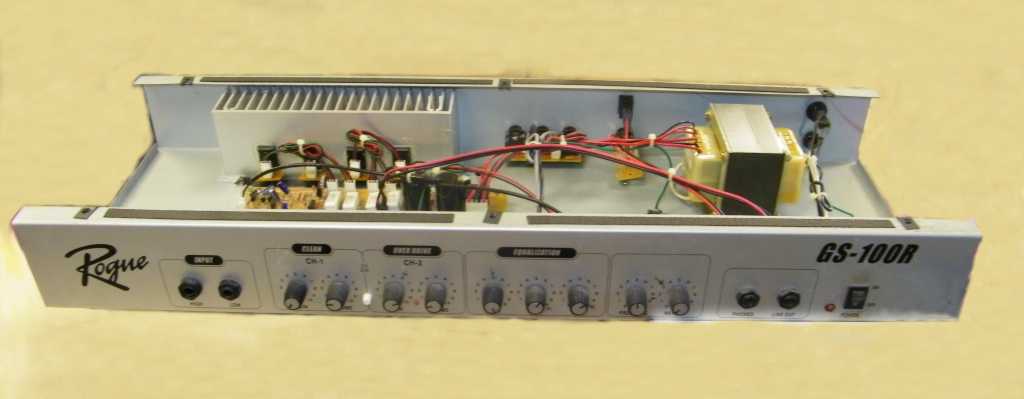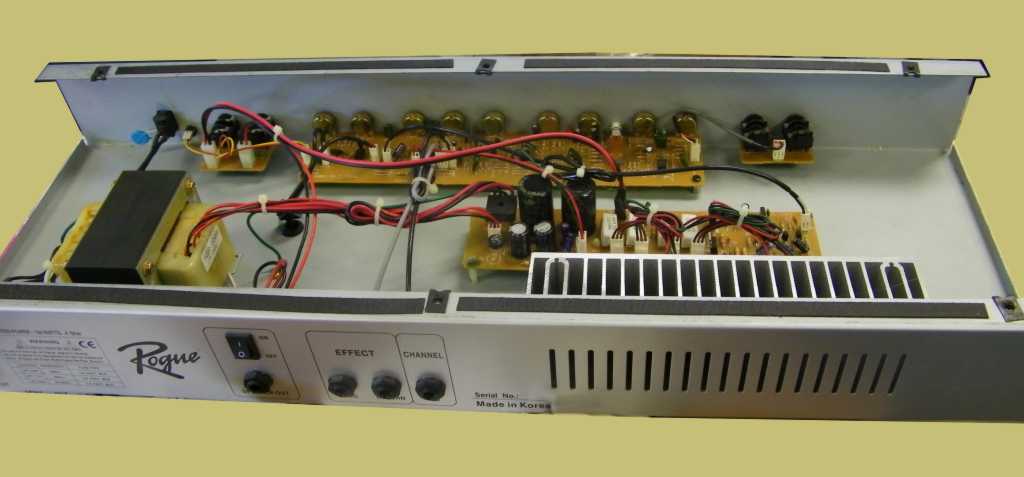Quote from: teemuk on August 28, 2009, 01:35:44 PMYep, you're seeing it correctly. Actually, that's one of the problems with this amp. Since I now own it, I did some checking on the reputation. They seem to inspire only two reactions - "good value for what I use it for" and "... cheap, nasty sounding junk".
Am I looking at it correctly; are all of those power transistors contained on their own little boards? Wow, that's something I've never seen before.
I think both of those are correct. The entire amp is interconnected on those little white plastic connectors so the boards can be connected with stick-in cables for fast assembly. First of all, small connectors can't carry a lot of current. The output transistors have to put out on the order of 11A peaks, and that's going over *1* of the pins in a little square-pin connector. Get some dirt on it, let it heat up and get loose, and you have a power intermittent. Then there's what vibration do to the connections. On top of that, every single control and jack is PCB mounted - in some cases, the PCBs are also "jack-mounted". The proximate cause of mine being $40 was an intermittent input jack - and it was obviously because someone bent on a plugged-in plug hard enough to crack the plastic jack and PCB. PCB mounted jacks, pots, and switches are a Very Bad Thing in guitar amps.
I just received a couple of pairs of Toshiba power transistors to replace the marginal TIP3055/2955 pairs, and I'm going to solder the wires to them, not PCB- and plastic-connector interconnect them.
I believe the all-PCB, all-the-time construction was a manufacturing saving. You could use a break apart PCB which contained ALL of the circuitry, including traces interconnecting the various little boards, then populate, wave-solder, and test the complete board. Once a board was known-good, the boards were broken apart, screwed into place, then connected with cables. Less handling, less labor, cheaper.
I'm *glad* they did it that way - it gave me a bargain.





 = 21.9Vrms, which is the same as 31V peak for a sine wave.
= 21.9Vrms, which is the same as 31V peak for a sine wave. ..so ive given up on it :trouble..ill use the case and pots and speaker for another project...and i suggest every one bypasses the fender frontman series when buying an amp....too much trouble..but i thank every one who has helped me out....
..so ive given up on it :trouble..ill use the case and pots and speaker for another project...and i suggest every one bypasses the fender frontman series when buying an amp....too much trouble..but i thank every one who has helped me out....